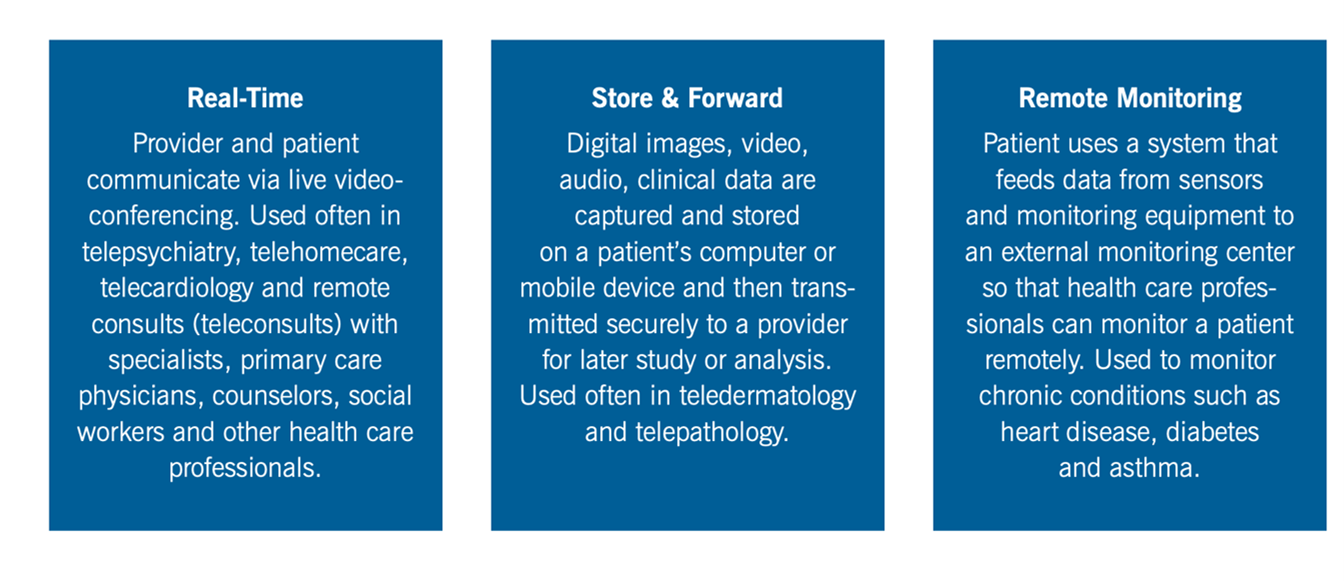Recent Posts
Most Popular
The Pros and Cons of Virtual Visits

The facilities for teleconsultations or virtual visits with a physician have been available for quite a few years before the 2020 pandemic when stay-at-home mandates pushed the adoption of these services at an unprecedented rate.
In 2015, a study by the American Hospital Association found that 52 percent of hospitals utilized virtual visits, with 74 percent of patients amenable to using telehealth services and 70 percent of healthcare consumers were comfortable with meeting their physicians online, instead of a physical visit. By 2020, the Telehealth Benchmark Survey conducted in association with Becker’s Hospital Review, revealed that 92 percent of hospitals and health systems had teleconsultation facilities in place, with 71 percent of providers ranking virtual health as a high priority for their practice, as compared to only 59 percent in 2019. A McKinsey report estimated that $250 billion of U.S. healthcare spent may be virtualized due to telehealth, as opposed to $3 billion before the pandemic.
It’s not surprising that these numbers have skyrocketed so rapidly. There are many advantages of providing teleconsultations for patients and physicians. Some of the pros of virtual visits are:
While telehealth has come a long way, it is certainly not without flaws. With the incredible speed that the industry is growing at, it is not surprising that regulatory authorities are finding it hard to keep up with the changes. Some of the cons of virtual visits are:
In 2015, a study by the American Hospital Association found that 52 percent of hospitals utilized virtual visits, with 74 percent of patients amenable to using telehealth services and 70 percent of healthcare consumers were comfortable with meeting their physicians online, instead of a physical visit. By 2020, the Telehealth Benchmark Survey conducted in association with Becker’s Hospital Review, revealed that 92 percent of hospitals and health systems had teleconsultation facilities in place, with 71 percent of providers ranking virtual health as a high priority for their practice, as compared to only 59 percent in 2019. A McKinsey report estimated that $250 billion of U.S. healthcare spent may be virtualized due to telehealth, as opposed to $3 billion before the pandemic.
It’s not surprising that these numbers have skyrocketed so rapidly. There are many advantages of providing teleconsultations for patients and physicians. Some of the pros of virtual visits are:
- Physicians can expand their patient base considerably by offering the convenience of a virtual visit to their patients. They can extend their services to patients who live in rural areas or those who find it difficult to travel for appointments due to age or disabilities thereby increasing their accessibility to health care services.
- The visits also augment the amount of facetime patients get with their physicians, which has been beneficial to education while establishing a physician-patient relationship and has demonstrated an overall increase in treatment compliance, inevitably leading to faster diagnosis and better outcomes.
- Telehealth facilities are cost-efficient, with built-in, automated billing systems for easy payment collections. Most programs are covered under insurance, making it easier to facilitate recoveries.
- An efficient virtual appointment schedule helps physicians to avoid no-shows or late appointments, common in physical or in-person visits. A last-minute no-show in teleconsultation makes it possible for physicians to offer same-day appointment requests on an on-demand basis, which allows patients who are waiting the chance to connect with their physicians earlier than expected while preserving the physician’s time and revenue. A patient may be reluctant to wait around all day at the physician’s office waiting for a cancellation or a no-show, for a chance to see his physician, but signing up to wait in the comfort of his or her surroundings for the same opportunity is something that most patients are willing to do.
While telehealth has come a long way, it is certainly not without flaws. With the incredible speed that the industry is growing at, it is not surprising that regulatory authorities are finding it hard to keep up with the changes. Some of the cons of virtual visits are:
- Regulatory barriers which vary from state to state may be hard to navigate, especially with the waivers to implementation that was put in place due to the need for a rapid response and scale-up required during the 2020 pandemic.
- There is a need to update software interfaces to make them more user-friendly. Complicated and outdated systems need to be replaced with technology that is easy to access and offers interoperability across various health systems to make a more cohesive transfer of patient health data.
- There are concerns with patient privacy and protection of patient information following HIPAA guidelines. Data security is paramount in this day and age where hackers have been known to steal patient insurance information and medical details, for their agendas. In 2019, the AMCA (American Medical Collection Agency) discovered that an unknown user had managed to illegally access its systems and steal the data of various organizations, including Quest Diagnostics. It was estimated that the data of 12 million patients of Quest Diagnostics was stolen, including financial data, Social Security numbers, and medical information.
- The need for a robust internet connection with adequate electronic support is required for an effective virtual visit. Some patients may not have access to these facilities and physicians may often lose out on important information over a poor-quality video consultation. Some providers may be able to provide care for minor ailments but may still require in-person visits for a detailed physical examination.





 Dr. Lakshmi Vaswani
Dr. Lakshmi Vaswani



Comments